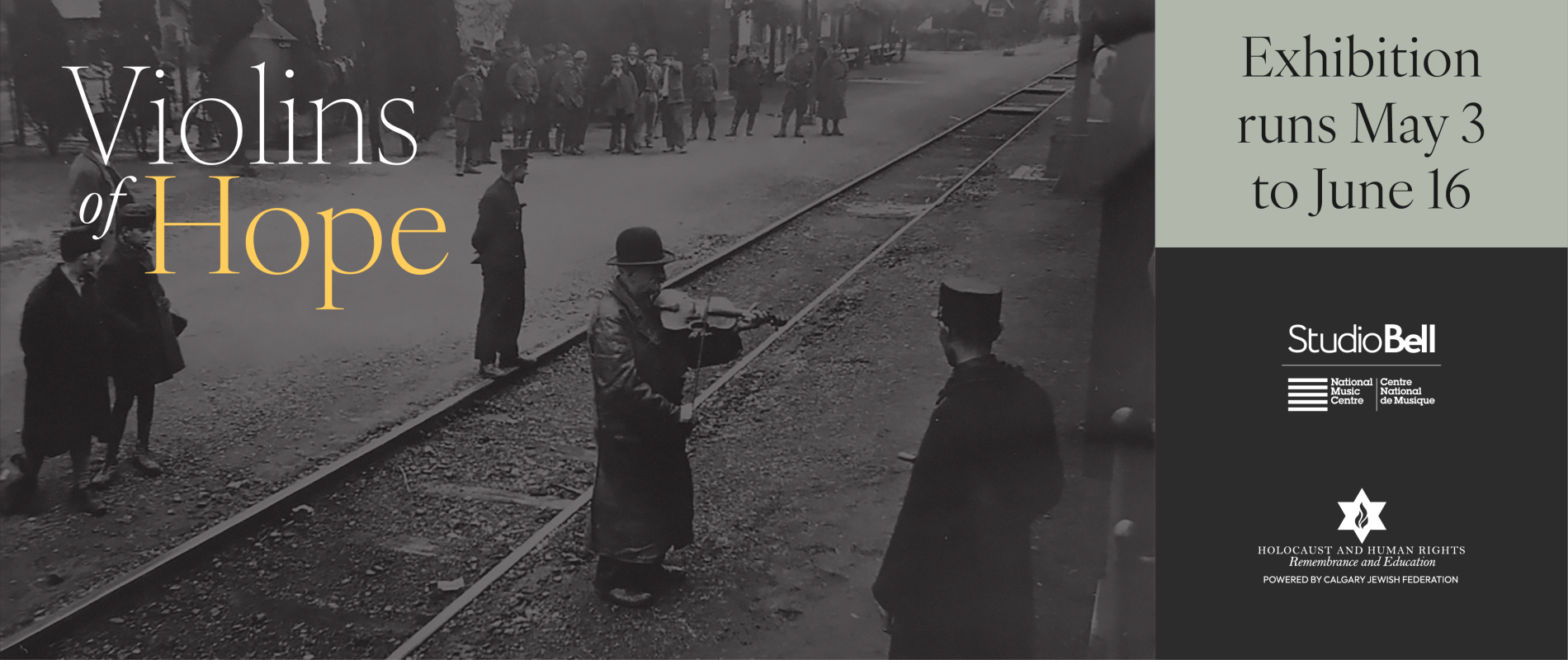
Violins of Hope is a poignant collection of string instruments dating from before and during the Holocaust. These meticulously restored instruments once belonged to victims and survivors of the Holocaust. Today, these instruments stand as enduring symbols, serving to educate and memorialize those affected by one of history’s darkest chapters through concerts, exhibitions, and other commemorative projects.
Originating from Tel-Aviv, Israel, the collection is owned and curated by violin maker Avshi Weinstein and his late father, Amnon. The instruments were donated or purchased from survivors and descendants or recovered from remnants of ghettos and concentration camps. Each instrument has borne witness to unimaginable hardship while embodying resilience and perseverance.
This NMC exhibition will offer immersive in-gallery experiences, enriched by historical images and the compelling stories that accompany each instrument.
History of the Collection
Sometime during the 1980s a young man brought his grandfather’s violin to Amnon Weinstein’s workshop in Israel for repair. Amnon was shocked to discover a black powder inside the instrument: ash accumulated during the instrument’s time in Auschwitz, the last place the violin had been played. Over the years, more instruments connected to the Holocaust were brought to his workshop, often with poignant stories detailing their history, travels, and ownership during the years of the Second World War. As the collection grew, Amnon’s desire to preserve this history became a passion. He began restoring the violins, preparing them to be played and heard once again, and in 2008 the first two major concerts for the Violins of Hope project were held in Istanbul and Jerusalem. Since then, Amnon and his son Avshalom have travelled the collection around the world, sharing powerful and moving stories of adversity, survival, loss, and hope.
Violins of Hope brings these instruments to communities worldwide, inviting audiences to immerse themselves in their beautiful sound, delve into their historical significance and examine the tragedy of the Holocaust. The exhibition has previously travelled to Australia, Germany, and cities across the U.S. Though small parts of the collection have previously travelled to Canada for use in concert, the National Music Centre is honoured to display and interpret the majority of the collection for its first exhibition in Canada.